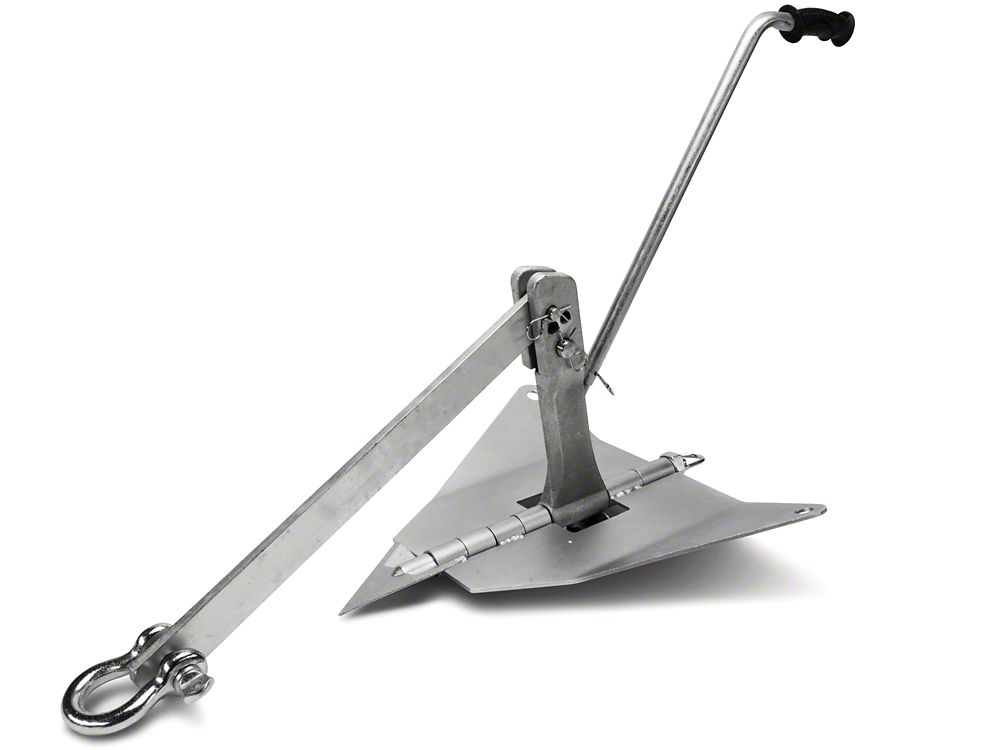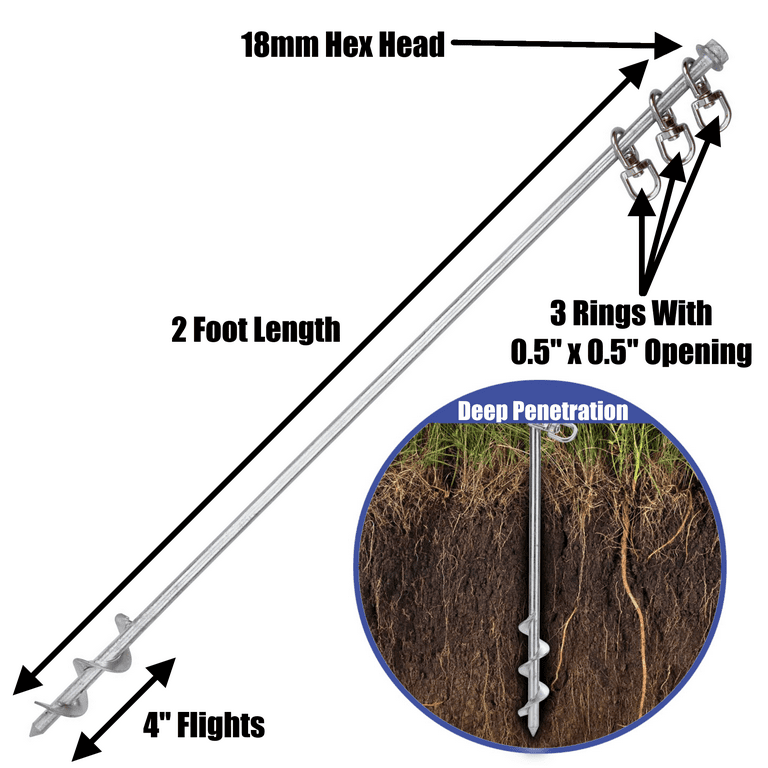Industry Professionals Offer Tips on the Best Ground Anchor Solutions
Industry Professionals Offer Tips on the Best Ground Anchor Solutions
Blog Article
Discover the Various Kinds Of Ground Anchor for Your Following Task
When beginning on a building or landscaping project, understanding the different kinds of ground supports readily available is critical to guaranteeing both security and resilience (Ground Anchor). From auger supports, which stand out in varied soil problems, to stake anchors developed for temporary installations, the choices are various. Furthermore, concrete and screw anchors existing special benefits in certain scenarios, while deadman supports are tailored for applications requiring resistance to lateral forces. The option of a suitable anchor type can considerably affect the general success of your project, motivating further exploration right into their respective advantages and applications.

Auger Anchors
Auger anchors are a popular option in various building and construction and landscaping jobs as a result of their one-of-a-kind layout and efficient securing capacities. These anchors contain a helical screw-like shaft that is driven right into the ground, permitting a steady and safe and secure hold. The spiral design facilitates simple installment and maximizes resistance against lateral pressures, making auger supports especially reliable in applications such as fence, short-term frameworks, and disintegration control.
The installation process of auger anchors is relatively uncomplicated. They can be manually or mechanically set up, depending upon the size and called for depth. This flexibility permits their usage in diverse dirt problems, from sandy to clayey surfaces. Additionally, auger anchors can be quickly eliminated and reused, which contributes to their cost-effectiveness and sustainability.
Among the considerable advantages of auger supports is their capacity to distribute loads equally across the surrounding dirt, reducing the danger of soil disruption and minimizing ecological impact. In addition, they are less prone to loosening or heaving gradually contrasted to conventional securing methods. Auger supports are an excellent selection for tasks needing resilient and trusted anchoring solutions.

Stake Anchors
When it involves protecting structures in a selection of outdoor applications, stake supports supply a uncomplicated and dependable option. These anchors are normally built from sturdy materials such as steel or aluminum, developed to stand up to environmental tensions while providing ideal security. Their straightforward design enables quick installment, making them an ideal option for long-term or temporary anchoring demands.
Risk anchors are specifically helpful in protecting tents, canopies, and various other lightweight frameworks against wind and climate. They operate by being driven right into the ground at an angle, developing a solid hold that withstands pull-out forces - Ground Anchor. The efficiency of stake supports relies on a number of elements, including dirt type, moisture web content, and the angle of installation
For added safety and security, many risk anchors include attachment factors for straps or ropes, enabling tension modifications as needed. In applications such as landscape design or building, they can effectively support devices or frameworks on unequal surface. Overall, risk supports provide a versatile and cost-efficient service for securing various outdoor setups, making them a recommended option for service providers and do it yourself fanatics alike.
Concrete Anchors
Concrete supports supply a durable remedy for protecting structures to concrete surfaces, making sure stability and security in numerous applications. These supports are necessary for jobs ranging from property constructions to large commercial installments. They can be found in different kinds, including expansion anchors, sticky anchors, and undercut supports, each developed for particular load demands and environmental problems.
When installed,Development supports rely on mechanical devices to grip the concrete. They are suitable for tool to durable applications. Glue anchors utilize high-strength epoxy or resin to bond the anchor to the concrete, using remarkable load-bearing capabilities, specifically in broken concrete situations. Undercut anchors produce an one-of-a-kind shape within the concrete, providing exceptional holding power, particularly in applications where tensile tons prevail.
Choosing the proper concrete support entails considering variables such as the weight of the lots, the problem of the concrete, and ecological conditions. Appropriate setup methods are important to make sure optimal performance and integrity. When carried out properly, concrete supports significantly boost the architectural stability of different tasks, making them indispensable in modern-day building and construction methods. Understanding the details needs of your task will aid in choosing the best kind of concrete anchor for the job.
Screw Anchors

Screw supports are a versatile securing solution that can be effectively employed in a selection of applications where typical concrete supports may not be enough. These anchors include a Recommended Reading helical design that enables them to be quickly driven into the ground, making them optimal for use in soil and other substrates. Their distinct structure gives excellent holding power and resistance to pull-out pressures, making them ideal for countless helpful resources jobs, from landscape design to architectural support.
One of the key advantages of screw supports is their ease of installment. They need very little equipment and can often be mounted without the requirement for excavation, which conserves both time and labor expenses. In addition, screw supports can be removed and recycled, offering a sustainable solution for momentary applications.
Screw supports are especially beneficial in locations where soil conditions are testing, such as sandy or loose dirts. Their ability to be set up at varying depths allows for customization based on particular project demands. Overall, screw supports provide a efficient and trusted securing method, making them a superb selection for professionals and engineers looking for efficient remedies for their tasks.
Deadman Anchors
Deadman supports offer as a durable option for maintaining frameworks in challenging problems, particularly where conventional anchoring techniques might fail. These anchors consist of big, hefty objects hidden underground, which develop resistance against lateral forces. The design commonly involves a straight element, such as a block of concrete or a metal plate, hidden in the dirt, to which bands or cords are affixed.
The effectiveness of deadman anchors hinges on their ability to disperse loads over a bigger area, minimizing the risk of failure in unpredictable soil conditions. They are specifically useful in applications such as keeping walls, momentary structures, and slope stabilization, where dirt motion can jeopardize the stability of the structure.
Installation of deadman anchors needs cautious planning to guarantee they are put at the proper depth and positioning, maximizing their look at this website load-bearing capacity. While they might require more labor and product than light-weight anchors, their dependability in unfavorable problems makes them indispensable for lasting projects. Deadman anchors are functional and can be adapted to numerous applications, making them a go-to choice for engineers encountering distinct difficulties in their jobs.
Verdict
Auger anchors stand out in varied dirt conditions, while stake supports match short-term applications. For concrete surface areas, development and adhesive supports supply trusted choices, and screw supports provide convenience in difficult terrains.
In addition, concrete and screw anchors present distinct benefits in specific scenarios, while deadman supports are customized for applications calling for resistance to side pressures - Ground Anchor.Auger supports are a popular option in different building and landscape design jobs due to their one-of-a-kind layout and efficient anchoring abilities. They come in different types, including growth supports, sticky anchors, and undercut supports, each made for specific load requirements and environmental problems
Adhesive supports make use of high-strength epoxy or material to bond the anchor to the concrete, providing remarkable load-bearing capabilities, especially in split concrete situations. In general, screw anchors supply a dependable and efficient securing technique, making them an outstanding selection for designers and professionals looking for reliable solutions for their projects.
Report this page